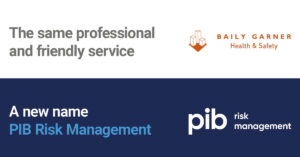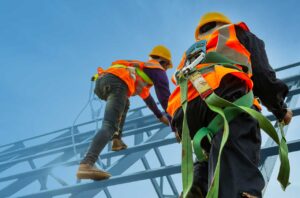On 8th November 2024, Cheshire East Council was fined £500,000 after Christopher Hall was killed by a falling tree limb on 28th August 2020 while walking his dog.
HSE investigations found that another limb had previously fallen from the same tree in September 2019; however, the council had not taken action to assess whether the tree posed future risks to safety.
Additionally, the council had no overarching tree strategy to manage risks from trees, and their grounds services contractor, Ansa Environmental Services Ltd, had no robust tree management policy. Both the council and Ansa Environmental Services Ltd pleaded guilty to breaching Section 3(1) of the Health and Safety at Work Act 1974.
‘It shall be the duty of every employer to conduct his undertaking in such a way as to ensure, so far as is reasonably practicable, that persons not in his employment who may be affected thereby are not thereby exposed to risks to their health or safety.’
Those responsible for managing trees should conduct a comprehensive risk assessment to identify priorities and determine the need for checks or inspections. The Health and Safety Executive (HSE) recommends zoning as an effective method for managing tree-related risks.
Zoning involves categorising areas of land based on the level of public use. Areas with higher use demand greater management attention. A simple approach could involve defining:
- Zone 1: High-Risk Areas:
Includes trees in locations with frequent public access (e.g., parks, schools, playgrounds, car parks) or those within falling distance of roads and railways. - Zone 2: Low-Risk Areas:
Covers trees in areas with limited public access and those not within falling distance of roads or other high-use areas.
A third category may apply to specific high-risk trees retained for heritage or habitat purposes, despite known structural faults.
Inspection Requirements
Zone 2 (Low-Risk Areas):
Routine inspection programs may not be necessary for lower-risk trees. However, procedures should be in place for reporting and addressing any issues. Informal observations can be conducted on an ad hoc basis by employees familiar with the area. These individuals do not need specialised tree knowledge but should recognise obvious signs of danger, such as uprooting or structural damage, and know whom to contact.
Zone 1 (High-Risk Areas):
Trees in high-risk areas require proactive, periodic checks. Inspectors should possess general tree knowledge and have the ability to identify visible signs of ill health or structural problems. Systems must be in place for reporting concerns and initiating follow-up actions.
Frequency of Inspections
Inspection frequency depends on specific circumstances, including tree location, condition, and recent events such as severe gales, vehicular collisions, or utility work nearby.
Special High-Risk Trees
High-risk trees with known structural issues may require regular detailed inspections by specialists, supplemented by informal observations and post-adverse weather checks.
Identifying Tree Issues
Key aspects to consider during general inspections include:
- Broken, detached, or fallen branches and limbs
- Large limbs overhanging property
- Cavities or rotten wood in the trunk or major branches
- Presence of fungi at the tree base
- Cracks or splits in the trunk or branch attachments
- Fallen or dying adjacent trees
- Strong lean in the trunk
- Damage from machinery, vehicles, or animals
- Building work impacts or root damage
- Premature leaf shedding or abnormal leaf colour/size
When in doubt about a tree’s safety, it is recommended that expert advice should be obtained.
Additional Risk Management Actions
Risk assessments should highlight further steps to mitigate tree-related hazards, such as:
- Restricting access during high winds
- Preventing root damage by prohibiting parking beneath trees
- Positioning picnic tables, play equipment, and other facilities outside the falling range of trees
- Rerouting paths away from high-risk areas
Developing a Tree Risk Management System
An effective system for managing tree risks should include:
- A thorough risk assessment, potentially incorporating maps of zones and special trees
- Plans for routine checks where required
- Procedures for reporting damage and initiating follow-up checks (e.g., after collisions)
- Protocols for obtaining specialist advice when necessary
- Strategies for ensuring public safety during high winds
- Monitoring to confirm implementation of risk management plans
Further guidance on managing tree risks is available on the HSE’s website.
If you have any questions or would like support with managing issues at your workplace, please speak to your usual contact or get in touch using the form below.

A new name for Baily Garner (Health and Safety) Limited

50 Years of the HSE and the Health & Safety at Work Act

Building Fire Safety Updated Approved Document B Published

Protecting Properties Against Flooding

The Building Safety Act – Are you meeting your legal responsibilities?
